Publications
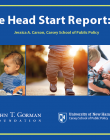
July 25, 2017
Founded in 1965, Head Start is designed to promote “school readiness of children under 5 from low-income families through education, health, social, and other services.”1 Created in 1994, Early Head Start focuses specifically on the youngest children—those under age 3, and pregnant women—and provides “early, continuous, intensive, and comprehensive child development and family support services to…
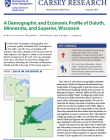
August 1, 2017
In this brief, we present a demographic and economic profile of Duluth, MN, and Superior, WI, with a specific focus on families with children. The cities, situated at the western point of Lake Superior (see Figure 1), share a rich economic history as major ports for coal, iron ore, and grain. Each city is also home to numerous colleges and universities, including the University of Minnesota-…

September 7, 2017
When asked to describe the rural United States, people usually mention serene and sprawling farmlands, rolling hills, open spaces, and safe, idyllic communities in which to raise children.1 Although there are a lot of acres in rural America, just 6 percent of rural workers depend on agriculture. Twenty-two percent depend on manufacturing,2 and the rest work in retail, sales, health care,…

September 14, 2017
Child poverty declined by 1.2 percentage points between 2015 and 2016, according to analyses of the official poverty measure (OPM) in the latest American Community Survey. By 2016, child poverty across the nation was still 1.5 percentage points higher than before the Great Recession.

October 17, 2017
In eastern Oregon, a semi-arid region dominated by dry forest, warming over the past few decades is affecting the productivity and health of forests that are central to the region’s landscapes, economy, and culture. A warmer and drier climate will likely bring more frequent and severe wildfires and increase stress on water availability. The impacts will be significant both for natural resources…

October 3, 2017
African American children are growing up in dramatically smaller families than they were 50 years ago.1 At a postwar peak in 1960, the average black child was one of 6.53 siblings, but today he or she is one of 3.18 (see Box 1). This measure has also dropped, but less dramatically, for the average white child, for whom “sibsize” was 4.1 in 1960 and today is 2.93.2 When we compare children of…
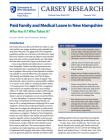
September 20, 2016
Life events such as an illness, the birth of a child, or a parent’s need for care require workers to take extended time away from their jobs. The aging of the New Hampshire population and the rise of women in the labor force mean that more workers in the state are likely to need extended time away from work to provide family care. But taking the leave often means loss of pay or even loss of a job…
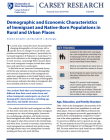
October 6, 2016
In recent years, researchers have documented the changing demographics of rural areas, with a specific focus on changes in racial-ethnic composition and immigration patterns, particularly the increased migration of Hispanics to rural places. In spite of this attention to the changing demographics of rural America, surprisingly little is known about how rural immigrants compare to both their urban…
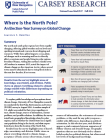
October 11, 2016
The north and south polar regions have been rapidly changing, affecting global weather and sea levels and sparking international concern about shipping and resources. While these global impacts occur, physical changes such as warming and less ice directly affect ecosystems and people living in polar regions. President Obama, visiting the northern Alaska town of Kotzebue in summer 2015, noted the…

October 25, 2016
In education today, diverse movements such as the “whole child” approach, “conveyor belt” services, and “Let’s Move!” share a common understanding that children bring a host of needs to school and often require more than academic support.1 Students living in poverty often benefit from more intensive support, as they are much more likely to come from difficult circumstances such as less stable…
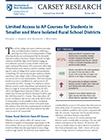
February 11, 2015
This brief assesses trends in access to, enrollment in, and success in Advanced Placement (AP) coursework in relation to school district poverty, racial composition, and urbanicity. It uses data merged from the 2011–2012 Civil Rights Data Collection (CRDC), the 2012 Small Area Income and Poverty Estimates (SAIPE), and the 2010 Decennial U.S. Census. Authors Douglas Gagnon and Marybeth Mattingly…
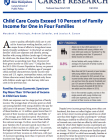
November 10, 2016
Access to quality, affordable child care is critical for American working families, and it is a major focus of efforts to bring about more family-friendly workplaces. In this brief, we analyze families’ child care expenses and identify, among families with young children (under age 6) who pay for child care, the share that are “cost burdened,” defined here as spending more than 10 percent of…

March 26, 2015
In this fact sheet, author Ken Johnson reports on new Census Bureau data released on March 26, 2015. The data provide further evidence that the recession’s influence on domestic migration is diminishing. Migration patterns are reverting to those commonly seen before the recession. Suburban counties of large metropolitan areas are receiving more domestic migrants, while large metropolitan core…

February 24, 2015
In CDFIs Stepping Into the Breach: An Impact Evaluation Summary Report, published with the U.S. Treasury Department's Community Development Financial Institutions Fund, authors Michael Swack, Eric Hangen and Jack Northrup analyze the impact of financial assistance awards and recipients of the Community Development Financial Institutions (CDFI) Program.
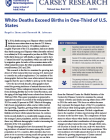
November 29, 2016
In 2014, deaths among non-Hispanic whites exceeded births in more states than at any time in U.S. history. Seventeen states, home to 121 million residents or roughly 38 percent of the U.S. population, had more deaths than births among non-Hispanic whites (hereafter referred to as whites) in 2014, compared to just four in 2004. When births fail to keep pace with deaths, a region is said to have a…

December 6, 2016
Counties and states with large shares of uninsured risk having to contend with a range of health and economic impacts, such as reduced workplace productivity, unsustainable demands on emergency departments, higher tax burdens resulting from uncompensated care costs, and deteriorating health care quality due to reductions in public spending.1
In 2013, before the implementation of major…
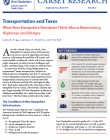
October 24, 2017
As in the United States as a whole, New Hampshire’s transportation infrastructure is in serious need of upgrading and maintenance. Addressing the problem will require substantial public investment, which will in turn require public awareness of infrastructure challenges and public understanding of the means to address them.
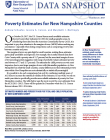
October 30, 2017
On October 20, 2017, the U.S. Census Bureau made available estimates of poverty and other indicators for 2016 for small geographic areas. In considering these data from the American Community Survey (ACS), it is important to pay close attention to the margins of error (MOE) before reaching any conclusions—especially when doing comparisons such as comparing poverty rates between counties and years…

October 31, 2017
Business owners seeking to start or expand a small business have limited options for financing. They can go to a bank for a loan, but they may have trouble qualifying for the loan due to the age of the business, absence of collateral, lack of equity in the business, thin margins, or other factors. While online business lenders may offer faster response times and lower underwriting hurdles, they…

November 2, 2017
Funding for the Children’s Health Insurance Program (CHIP)—the federal program that extends health insurance coverage to low income children not eligible for traditional Medicaid—officially expired on September 30, 2017. Given that states implement CHIP in different ways, states will run out of funds at different times, with twelve states exhausting their federal allotment by the end of 2017 (see…
